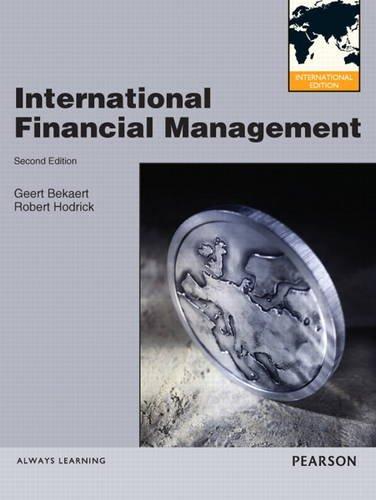Question
1- You are considering investing $1,000 in a complete portfolio. The complete portfolio is composed of Treasury bills that pay 5% and a risky portfolio,
1- You are considering investing $1,000 in a complete portfolio. The complete portfolio is composed of Treasury bills that pay 5% and a risky portfolio, P, constructed with two risky securities, X and Y. The optimal weights of X and Y in P are 60% and 40%, respectively. X has an expected rate of return of 14%, and Y has an expected rate of return of 10%. If you decide to hold 70% of your complete portfolio in the risky portfolio and 30% in the Treasury bills, then the dollar values of your positions in X and Y, respectively, would be ____ and ___.
$360; $240
$150; $100
$420; $280
$100; $150
2 - The correlation between asset A and asset B is 0. Which of the following statements is true?
There is no diversification benefit in combining the two assets in a portfolio.
There are diversification benefits in combining the two assets in a portfolio.
All risk averse investors will want to invest in A only.
All risk averse investors will want to invest in B only
3- There are only 2 risky assets in the market. Stock A with 100 shares outstanding and the price per share of $120, and stock B with 150 shares outstanding and the price per share of $80. According to the CAPM, if an investor invests $1000 in the optimal risky portfolio, how much does she invest in each of the 2 risky assets?
$400 in stock A and $600 in stock B
$200 in stock A and $800 in stock B
$700 in stock A and $300 in stock B
$500 in stock A and $500 in stock B
Step by Step Solution
There are 3 Steps involved in it
Step: 1

Get Instant Access to Expert-Tailored Solutions
See step-by-step solutions with expert insights and AI powered tools for academic success
Step: 2

Step: 3

Ace Your Homework with AI
Get the answers you need in no time with our AI-driven, step-by-step assistance
Get Started


